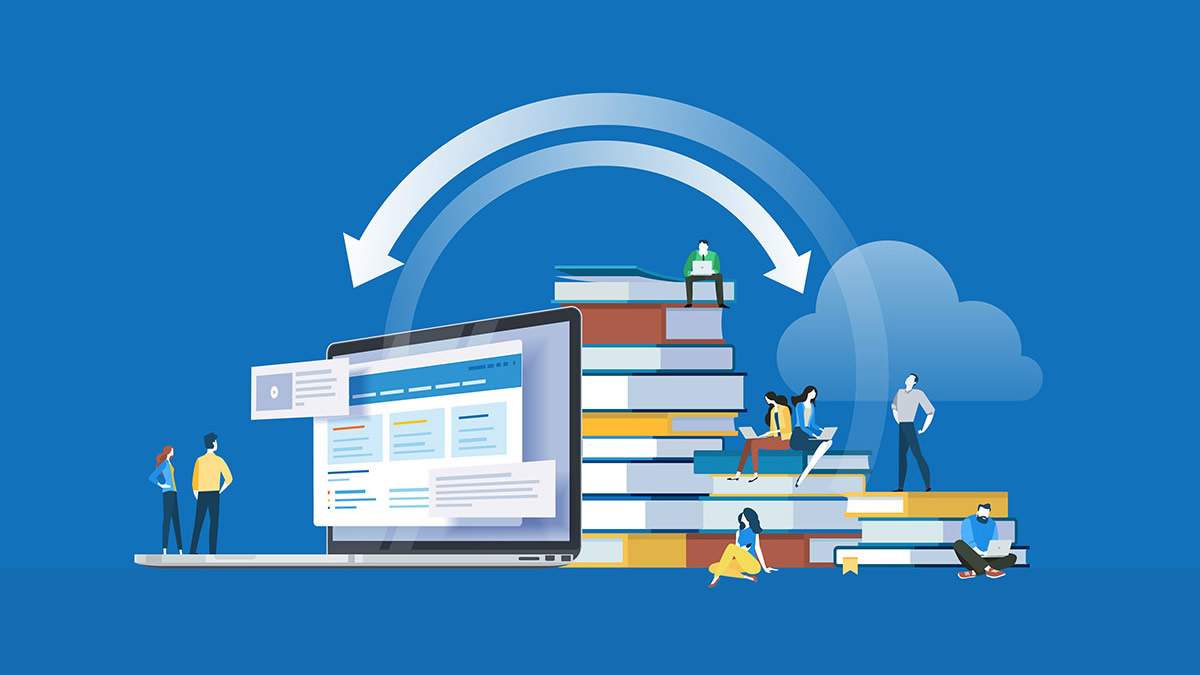Learning Management Systems (LMSs) have been around since the late 1990s and their goal is to help make sure an organization’s learning and readiness meet their overall objectives. LMSs are often closely aligned with Human Resources systems; and with the advent of the cloud, many have become part of the digital transformation strategy preparing personnel for the changes. Modern LMSs are powerful tools that aim to deliver on the promise of keeping firms at the edge of this transformation.
Yet too often, LMSs fall short of the desired ROI. In a recent report by Go1, it stated that “Users don’t complain because their LMS doesn’t have enough features. They don’t even complain about price. What users complain about the absolute most is the ability to actually use the software.” The primary reason for this may not be so much the users’ ability to understand and work with the LMS software, but because there isn’t enough relevant or up-to-date content being fed into the LMS. Organizations struggle to integrate relevant, quality, and up-to-date content into their LMS. Users of organizations are instead forced to go to exogenous platforms and portals to access the latest content that is not available on their own LMS. Why is this happening? There are five primary reasons:
- Learning content is too expensive and complicated to develop in house, so it is best to look elsewhere to find it.
- Learning content changes too frequently to be regularly maintained or updated in-house in the LMS.
- Outside content is not easy to pull into an LMS because of non-standard technical requirements across thousands of different external sources.
- API integrations are often too complex and require dedicated staff; and there are so many different API standards that it can be burdensome to manage for a learning division simply trying to focus on fulfilling its readiness mission.
- Budgets cannot support growing LMS expenditures beyond the licenses.
The net result is that while LMSs have powerful features, the overall LMS experience, without the proper content, is suboptimal. The hefty investment in the LMS ends up providing lower than expected ROI. For all intents and purposes, many organizations end up feeling as though they had bought a nice car (LMS), which they are forced to park in a garage, because they don’t have or can’t afford the needed gas to take them places (the content).
Does this mean the days of the LMSs are over? No, on the contrary; as the world has accelerated to moving at the speed of the cloud, learning and enablement are more important than ever. What is needed now is a way to constantly fuel the LMS solution so that it continuously readies the organization, taking it to its next destination. Enablement networks may very well be the solution to fulfill the LMS promise. Enablement networks are cloud-based ecosystem platforms that help organizations easily connect to one another to share information like content, data, and metrics, while remaining compliant within their own LMS environment. An Enablement network platform like TIDWIT empowers organizations with content feeds by:
- Integrating content from providers seamlessly with existing LMSs with little to no code or APIs. It literally takes a few hours to setup.
- Delivering relevant and up-to-date content dynamically from different providers, helping enrich the LMS and boosting the LMS’s use in the process.
- Eliminating the need to create in-house learning content, allowing organizations connect instead to what already exists.
- Enabling content to be updated at the source instantly with no maintenance required on the LMS.
- Helping organizations to save massive amounts of budget on both integration and content.
Enablement networks do not replace LMSs but rather help them maximize their usage by piping in a world of learning content that would have otherwise been oblivious to the LMS users. By creating seamless bridges between the LMS and the plethora of sources of the content, enablement networks like TIDWIT effectively maximize the usage of the LMS and the organization’s ROI. The optimal procurement strategy would be to get an LMS along with an enablement network service that feeds it the content, for the combined solution to deliver the optimal learning experience that scales to meet the modern organization’s rising readiness needs.







